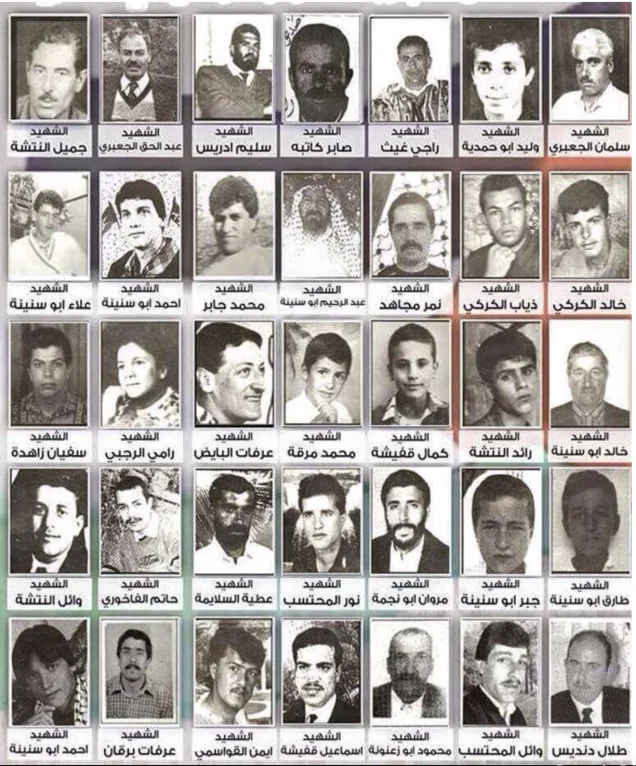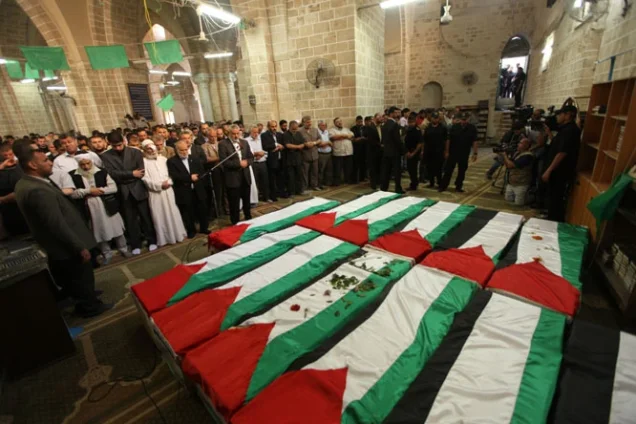
On February 25, 1994, the last Friday of Ramadan, after the Oslo Accords, the city of Hebron in the West Bank became of particular interest due to the tense atmosphere surrounding Israeli settlers. The question arose: Will the settlements be evacuated, and the settlers deported, as part of the final negotiations between Palestinians and Israelis?
The significance of Hebron lies in its status as a center for some extremist settlers due to its religious importance. It is safe to say that Hebron is the second holy city in Palestine after Jerusalem.
In the early hours of the last Friday of Ramadan, on February 25, 1994, Israeli forces guarding the Ibrahimi Mosque allowed the known extremist Jewish settler, Baruch Goldstein, to enter the holy site carrying his automatic rifle and several prepared ammunition magazines. Goldstein immediately began firing at worshippers inside the mosque.
The massacre resulted in the martyrdom of 60 Palestinians and the injury of dozens before those who survived managed to overpower and kill Goldstein.
It was rumored that more than one Israeli gunman participated in the massacre. However, the prevailing narrative suggests that Goldstein acted alone in firing inside the Ibrahimi Mosque. Nevertheless, the Israeli soldiers and armed settlers' response to the spontaneous Palestinian reactions, manifested in protests, was marked by the intensive use of live ammunition. In less than 24 hours after the massacre, 53 Palestinian martyrs fell in various areas, including Hebron itself.
The Israeli government quickly condemned the massacre, affirming its commitment to the peace process with the Palestinians. It sought to attribute responsibility to one individual, Goldstein. Israel arrested a limited number of figures from the Kach and Kahane Chai groups who expressed approval of Goldstein's crime. The government issued a decision to ban the activities of these two organizations. However, it is clear that all these measures were formalities with no real substance. The Israeli elite, including the coalition government of Labor, deliberately ignored disarming the settlers. Kiryat Arba in the heart of Hebron (the settlement from which Goldstein came) represents a clear and explicit case of the danger of settler terrorism. The settlers there have retained their weapons, and the governments of Labor and later Likud deliberately postponed the scheduled redeployment according to the Palestinian-Israeli agreements. This was to ensure that around four thousand Jewish settlers in Hebron would have reasons to remain on racist grounds (security and livelihood) in the face of a hundred thousand Palestinians who are still exposed to the danger of further massacres similar to Goldstein's.
The danger of Goldstein lies in the fact that he represents a model of Zionist terrorism, and it remains possible that others like him will emerge in the post-Oslo era. Although Goldstein's profession was medicine, the social and educational system in which he grew up as a settler led him to practice racism, for which he became notorious, including refusing to treat Palestinians. Goldstein openly spoke about the sanctification of non-Jewish blood and cherished memories of the Israeli army, in which he learned to oppress Palestinians during his service. In any case, as a settler, he never parted with his weapon wherever he went. What indicates the possibility of repeating the Goldstein model in the future is another settler firing on unarmed Palestinians in the Hebron market three years after the Ibrahimi Mosque massacre. Additionally, Goldstein's grave has turned into a sacred shrine for Zionist settlers in the West Bank.




التعليقات - 2